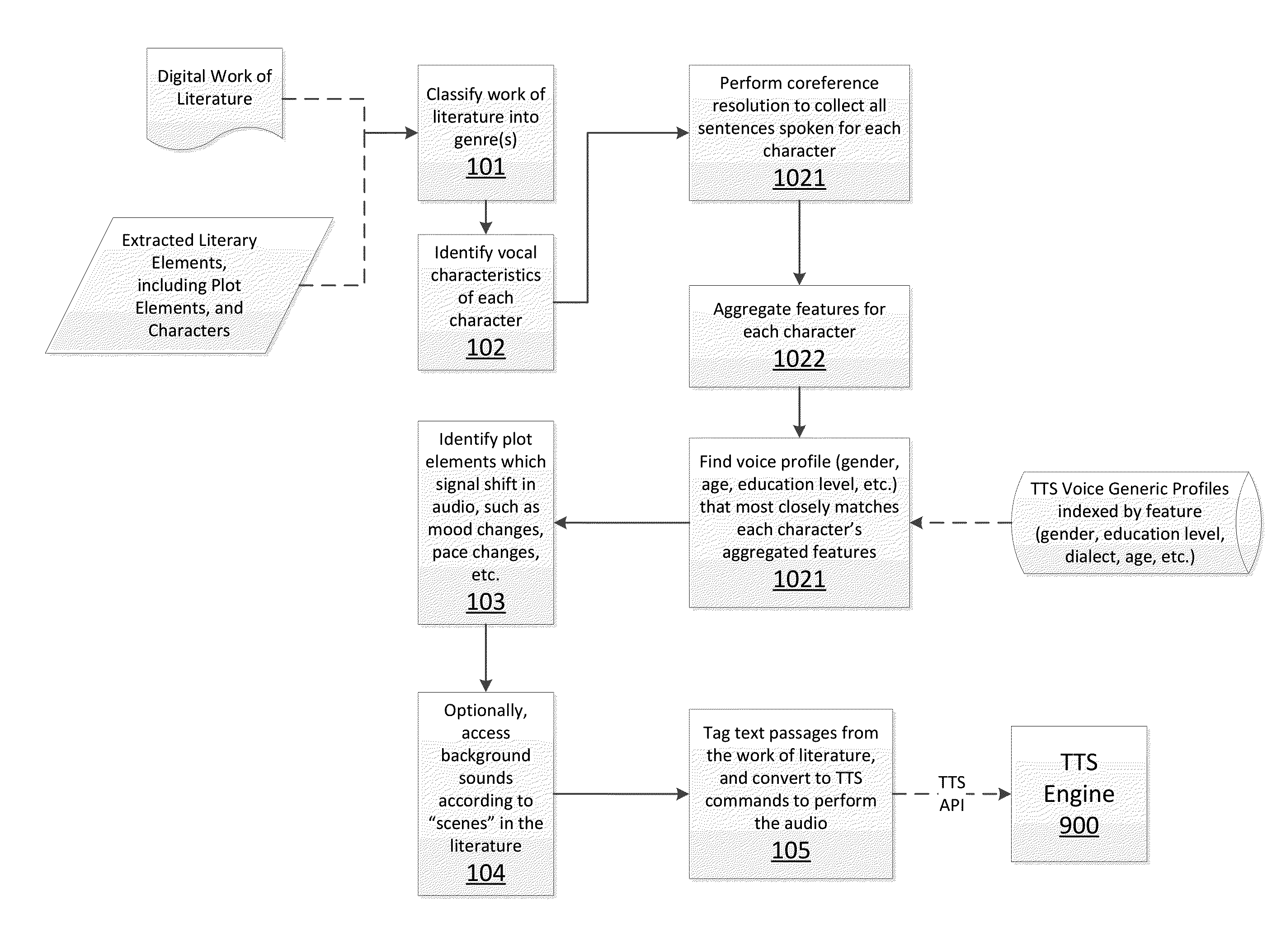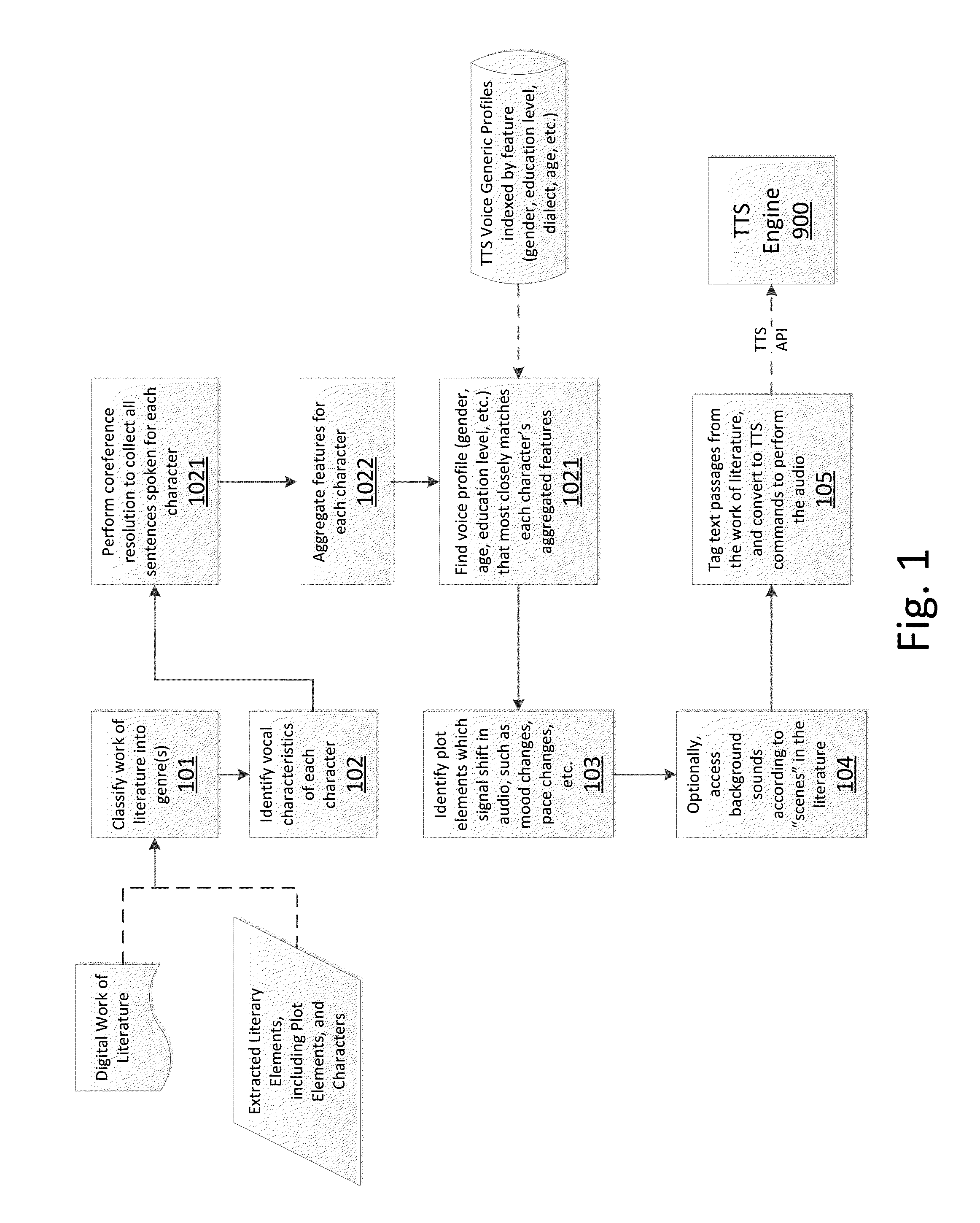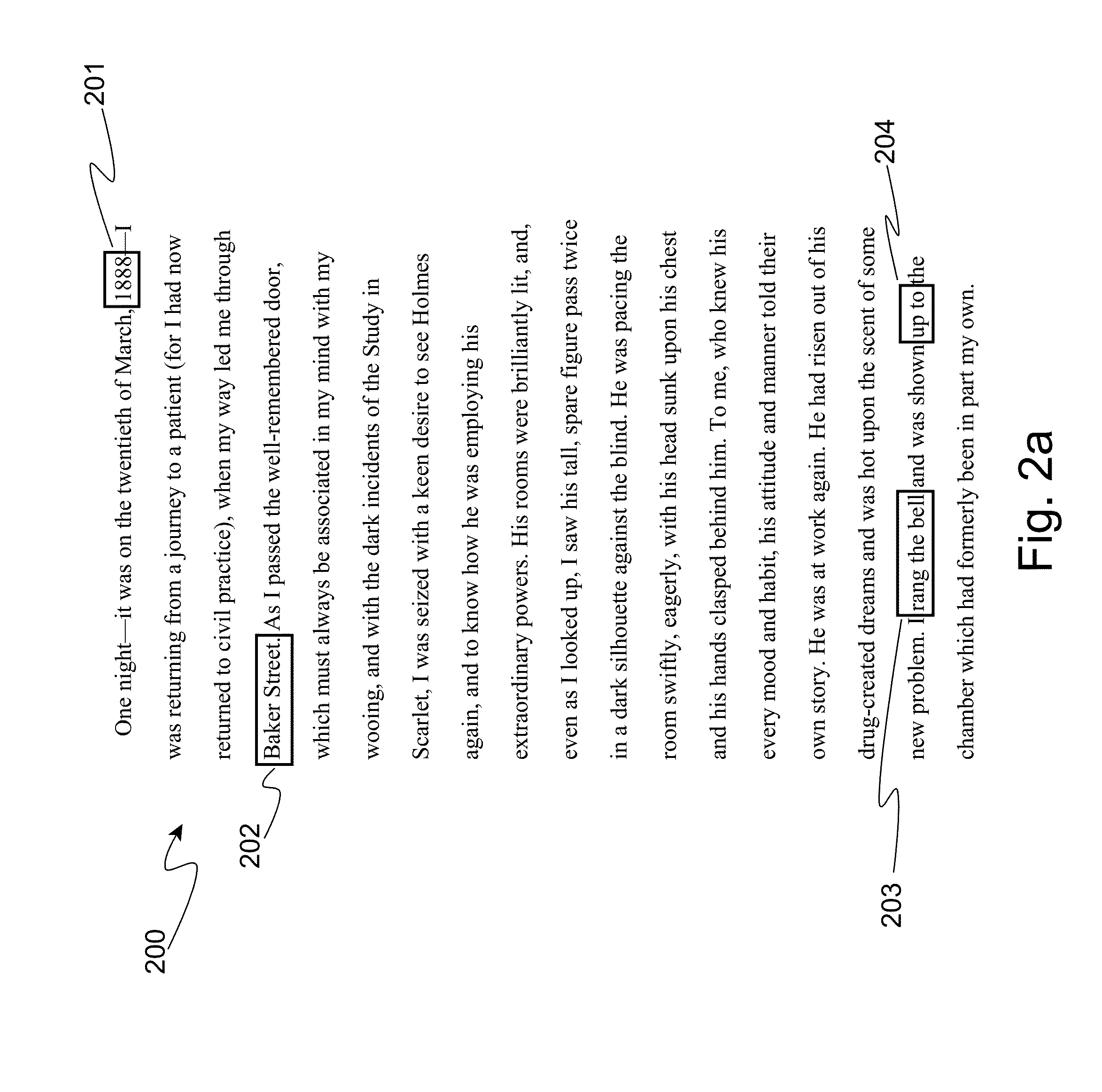Text-to-Speech for Digital Literature
a text-to-speech and digital literature technology, applied in the field of text-to-speech for digital literature, can solve the problems of not conveying much of the rest of the meaning computer-generated voices, and accurately conveying the written words of the digital text, and achieve the effect of enhancing text-to-speech control
- Summary
- Abstract
- Description
- Claims
- Application Information
AI Technical Summary
Benefits of technology
Problems solved by technology
Method used
Image
Examples
first exemplary embodiment
A FIRST EXEMPLARY EMBODIMENT
[0027]The present invention provides a method and system which of leverages literary elements extracted from a work of literature (e.g., novel, short story, etc.) or non-fiction (e.g., historical account) to accurately express each individual character's emotion and inflection according to the ebb and flow of plot elements when vocalizing the work via an enhanced TTS system. Rather than just selecting a synthesized voice that aligns with a character's established profile (age, gender, accent, etc.). Natural Language Processing (NLP) techniques are utilized to extract literary elements, including plot elements, from a work of literature. These literary elements, and their changes throughout the work of literature, are used to augment the commands to a TTS engine such that the resulting speech not only represents a voice of each character, but also more closely represents the mood and attitude of the character at each point during the plot of the work of li...
second exemplary embodiment
A SECOND EXEMPLARY EMBODIMENT
[0067]In a second exemplary embodiment, even more realism is brought forth through the TTS engine by further enhancing the command set prepared to input into it. After a work of literature has been made into a movie, the voices and intonations of the characters become associated with the actors who portrayed the characters in the movie. Some franchises of series of works of literature have successfully employed different actors during different periods of time, such as Ian Fleming's James Bond 007 novels, which have been made into movies in which multiple actors have portrayed the main character. However, other novel series, such as J. K. Rowling's Harry Potter series of novels, have only been made into movies using the same actors, whose voices have become synonymous with the characters. It is safe to say, if one has seen a Harry Potter movie and then one reads a novel, one will hear the actors' voices for each character in their mind as they read the n...
third exemplary embodiment
[0078]As discussed in the foregoing paragraphs, a user experience of text-to-speech rendition of literary works may be greatly improved by utilizing the deep analysis of the work such that vocalization of individual characters can be performed in a way that most closely resembles the actual characters. It is a common situation when same or similar characters appear in a number of works. Harry Potter books provide a good example. If a user wants to listen to multiple books from in a series, it is important to preserve consistency of voice-over performance; the same character should be narrated in a consistent and recognizable way.
[0079]In some cases there is not a character in common between two or more works of literature who is identifiable by name, but the common character may have some recognizable properties. For example, if a character is known as ‘southern old man store owner”, a very specific narration can be selected, with appropriate pitch, accent, gender, etc. A separate c...
PUM
 Login to View More
Login to View More Abstract
Description
Claims
Application Information
 Login to View More
Login to View More - R&D
- Intellectual Property
- Life Sciences
- Materials
- Tech Scout
- Unparalleled Data Quality
- Higher Quality Content
- 60% Fewer Hallucinations
Browse by: Latest US Patents, China's latest patents, Technical Efficacy Thesaurus, Application Domain, Technology Topic, Popular Technical Reports.
© 2025 PatSnap. All rights reserved.Legal|Privacy policy|Modern Slavery Act Transparency Statement|Sitemap|About US| Contact US: help@patsnap.com



